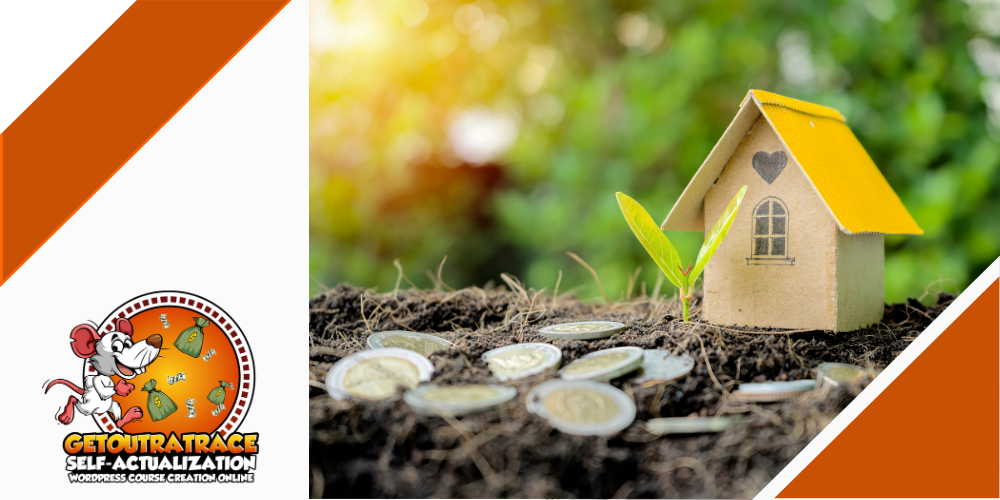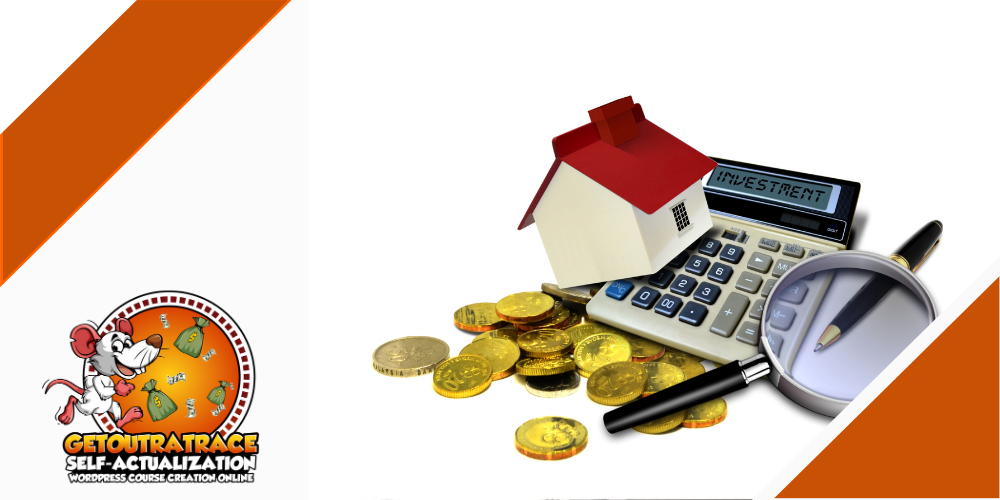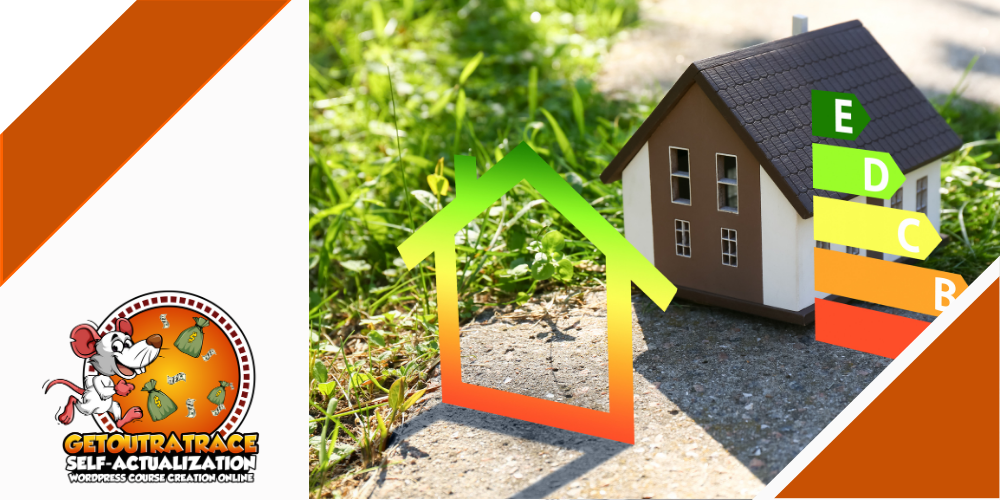SELF ACTUALIZATION
Create a website platform from your passion.
Like a driver’s license, it unlocks numerous opportunities for monetization.
Phone number
07729 866 544

Property investment involves purchasing real estate with the expectation of generating a return on investment (ROI). This can be achieved through various means such as rental income, appreciation in property value over time, or a combination of both.
Investors often buy properties with the intention of renting them out to tenants, thereby earning rental income on a regular basis. Additionally, they may benefit from the appreciation of the property’s value over time, allowing them to sell the property at a higher price than what they initially paid for it.
Property investment can take many forms, including residential properties (such as single-family homes, apartments, or condominiums), commercial properties (such as office buildings, retail spaces, or industrial properties), and even vacant land.
Investors may also engage in property development, which involves purchasing land, developing it by constructing buildings or other improvements, and then selling or renting out the developed properties for a profit.
Like any investment, property investment carries risks, including market fluctuations, changes in property values, maintenance costs, and the potential for vacancy periods where rental income may not be generated. However, with careful research, analysis, and management, property investment can be a lucrative way to build wealth over the long term.
Let’s delve deeper into the concept of what is property investment.
Types of Property Investment:
Methods of Generating Returns:
Risks and Challenges:
Strategies for Success:
Property investment can be a rewarding way to build wealth and generate passive income over the long term, but it requires careful planning, research, and management to succeed in the ever-changing real estate market.

Property is often considered a relatively safe investment for several reasons:
Tangible Asset: Unlike stocks or bonds, which represent ownership in a company or debt obligation, property is a tangible asset with intrinsic value. Real estate typically provides a physical structure or land, which can serve as collateral and has inherent value even in times of economic uncertainty.
Historical Stability: Over the long term, property values tend to appreciate, providing investors with the potential for capital gains. While there can be fluctuations in property values in the short term due to market conditions, historical data often demonstrates a general upward trend in real estate prices.
Income Generation: Properties can generate rental income, providing investors with a steady cash flow stream. Rental income can serve as a hedge against market volatility, as long-term leases can provide predictable revenue regardless of short-term market fluctuations.
Inflation Hedge: Real estate is often considered a hedge against inflation. As the cost of living increases over time, property values and rental rates tend to rise as well, allowing investors to maintain the purchasing power of their investment.
Diversification: Including real estate in an investment portfolio can help diversify risk. Real estate often behaves differently from other asset classes such as stocks and bonds, meaning that it may not be affected by the same market factors. Diversification can help reduce overall portfolio volatility and improve risk-adjusted returns.
Leverage Opportunities: Real estate investments can be leveraged through mortgage financing, allowing investors to control a larger asset base with a relatively small initial investment. While leverage increases risk, it also amplifies potential returns, particularly in a low-interest-rate environment.
Tax Benefits: Property investors may enjoy various tax advantages, including deductions for mortgage interest, property taxes, depreciation, and operating expenses. These tax benefits can enhance the after-tax return on investment and improve overall profitability.
Demand for Shelter: The need for shelter is a fundamental human requirement, making real estate a necessity rather than a discretionary purchase. Regardless of economic conditions, there will always be demand for housing and commercial space, providing a stable underlying demand for property investments.
While property investment offers numerous benefits, it’s essential to recognize that it also carries risks, including market fluctuations, tenant issues, maintenance costs, and liquidity constraints. Investors should conduct thorough research, seek professional advice, and diversify their portfolios to mitigate these risks effectively.

Property investment has a rich and diverse history that spans centuries and encompasses various cultures and economic systems. Here’s an overview of the history of property and what is property investment article:
Ancient Civilizations: Property ownership and investment have roots in ancient civilizations such as Mesopotamia, Egypt, Greece, and Rome. Land ownership was a symbol of power and wealth, and individuals and families amassed large estates and properties.
Feudalism and Landownership: During the feudal era in medieval Europe, landownership was the primary source of wealth and power. Feudal lords owned vast estates and granted land to vassals in exchange for military service or other obligations. This system laid the groundwork for modern property ownership structures and land tenure systems.
Agricultural Economy: Throughout much of history, property investment primarily revolved around agricultural land. Landlords leased or rented out land to tenant farmers, who cultivated crops and paid rent in the form of a portion of their harvest. Landownership was concentrated in the hands of a privileged few, leading to disparities in wealth and social inequality.
Urbanization and Industrialization: The rise of cities and industrialization in the 18th and 19th centuries transformed property investment. Urbanization led to increased demand for residential, commercial, and industrial properties in burgeoning cities. Investors capitalized on opportunities to develop and own real estate in urban centers, leading to the growth of cities and the expansion of property markets.
Real Estate Investment Trusts (REITs): In the United States, REITs were introduced in the 1960s as a way for individual investors to access real estate investment opportunities without directly owning properties. REITs allow investors to buy shares in portfolios of income-producing properties, providing liquidity and diversification benefits.
Globalization and Modern Property Markets: The late 20th and early 21st centuries saw the globalization of property markets, with investors participating in real estate transactions across borders. The development of financial instruments such as mortgage-backed securities and real estate derivatives expanded investment opportunities and increased liquidity in property markets.
Technological Advances: Advances in technology, particularly the internet and digital platforms, have transformed the way property investment is conducted. Online listing services, crowdfunding platforms, and real estate investment apps have made it easier for investors to research, analyze, and invest in properties remotely.
Sustainable and Impact Investing: In recent years, there has been a growing focus on sustainable and impact investing in real estate. Investors are increasingly considering environmental, social, and governance (ESG) factors when making property investment decisions, driving demand for green buildings, energy-efficient technologies, and socially responsible development projects.
Throughout history, property investment has been a fundamental aspect of wealth accumulation and economic development. While the methods and instruments of property investment have evolved over time, the underlying principles of property ownership, income generation, and wealth preservation remain central to real estate investment strategies.

The future of property investment is likely to be shaped by several key trends and developments. In future when we ask what is property investment the answer will be much different:
Technology Integration: Technology will continue to play a significant role in property investment, with innovations such as artificial intelligence (AI), big data analytics, and blockchain transforming the way real estate transactions are conducted. AI-powered algorithms can analyze vast amounts of data to identify investment opportunities and predict market trends, while blockchain technology offers secure and transparent transactions through smart contracts.
Smart Buildings and Sustainable Design: There is increasing demand for smart buildings that incorporate technology to optimize energy efficiency, improve occupant comfort, and enhance operational performance. Sustainable design principles, such as green building certifications and renewable energy systems, will become standard practices as investors prioritize environmentally friendly and socially responsible properties.
Urbanization and Mixed-Use Developments: The trend towards urbanization is expected to continue, driving demand for mixed-use developments that integrate residential, commercial, and retail spaces. Investors will seek opportunities in transit-oriented developments, urban infill projects, and revitalization initiatives that cater to the needs of urban dwellers seeking convenience, amenities, and connectivity.
Demographic Shifts: Changing demographics, including population growth, aging populations, and shifting lifestyle preferences, will influence property investment trends. Investors will target sectors such as senior housing, multifamily rental properties, and urban communities that cater to diverse and evolving demographic needs.
Flexible Workspaces and Remote Work: The rise of remote work and flexible work arrangements will impact the demand for office space and commercial properties. Investors may pivot towards flexible workspaces, co-working facilities, and hybrid office models that accommodate changing work patterns and preferences.
Health and Wellness: The COVID-19 pandemic has heightened awareness of health and wellness considerations in the built environment. Investors will prioritize properties that prioritize safety, hygiene, and well-being, incorporating features such as touchless technologies, indoor air quality enhancements, and wellness amenities.
Alternative Investment Vehicles: Alternative investment vehicles, such as real estate investment trusts (REITs), real estate crowdfunding platforms, and digital securities, will continue to gain traction as investors seek diversified and accessible ways to invest in property. These platforms offer liquidity, transparency, and flexibility, allowing investors to access a broader range of real estate assets.
Globalization and Cross-Border Investment: Property investment will increasingly transcend geographical boundaries, with investors diversifying their portfolios through international and cross-border transactions. Emerging markets and regions with favorable demographic trends, economic growth, and regulatory environments will attract capital from global investors seeking higher returns and portfolio diversification.
Overall, the future of property investment will be characterized by innovation, sustainability, flexibility, and responsiveness to evolving market dynamics and societal needs. Successful investors will embrace technological advancements, adopt sustainable practices, and remain adaptable in an ever-changing real estate landscape.

Property and stocks/shares are two distinct asset classes, each with its own characteristics, advantages, and risks. Here’s a comparison between property investment and investing in stocks/shares:
Property Investment:
Tangibility: Property investment involves owning physical assets such as land, buildings, or residential/commercial properties. This tangible nature can provide a sense of security and stability to investors.
Income Generation: Property investments can generate rental income through leasing or renting out the property to tenants. This rental income can provide a steady stream of cash flow, especially in the case of residential or commercial properties.
Potential for Appreciation: Properties have the potential to appreciate in value over time, providing capital gains to investors when they sell the property. Appreciation can be influenced by factors such as location, demand-supply dynamics, and economic conditions.
Leverage: Property investments can be leveraged through mortgage financing, allowing investors to control a larger asset base with a relatively small initial investment. While leverage can amplify returns, it also increases risks, particularly in the case of market downturns or rising interest rates.
Inflation Hedge: Real estate is often considered a hedge against inflation, as property values and rental income tend to rise with increases in the cost of living.
Stocks/Shares Investment:
Ownership in Companies: Investing in stocks/shares involves purchasing ownership stakes in publicly traded companies. Shareholders participate in the company’s profits through dividends and capital appreciation.
Liquidity: Stocks/shares are highly liquid assets that can be bought and sold on stock exchanges with relative ease. This liquidity allows investors to quickly enter or exit positions as market conditions change.
Diversification: Investing in stocks/shares provides opportunities for diversification across industries, sectors, and geographic regions. Diversification can help spread risk and reduce portfolio volatility.
Potential for Growth: Stocks/shares have the potential for significant capital appreciation over the long term, especially in the case of growth-oriented companies or emerging industries.
Volatility: Stocks/shares can be highly volatile, with prices fluctuating in response to market sentiment, economic indicators, and company-specific news. Investors may experience periods of significant price swings and bear market downturns.
Considerations for Investors:
Risk Tolerance: Property investment may appeal to investors seeking tangible assets and stable income streams, while stocks/shares may be suitable for those comfortable with market volatility and seeking higher growth potential.
Time Horizon: Property investment is often considered a long-term strategy, while stocks/shares can be suitable for both short-term trading and long-term investing.
Diversification: Both property and stocks/shares offer opportunities for diversification within an investment portfolio. Investors may choose to allocate their assets across both asset classes to mitigate risk and achieve balanced returns.
Market Conditions: Economic conditions, interest rates, and market trends can impact the performance of both property and stocks/shares. Investors should conduct thorough research and consider the prevailing market environment when making investment decisions.
Ultimately, the choice between property investment and investing in stocks/shares depends on individual preferences, financial goals, risk tolerance, and investment horizon. Many investors choose to diversify their portfolios by including both asset classes to benefit from their respective advantages and mitigate their risks.

Property and cryptocurrencies are vastly different asset classes, each with its own characteristics, advantages, and risks. Here’s a comparison between property investment and investing in cryptocurrencies:
Property Investment:
Tangibility: Property investment involves owning physical assets such as land, buildings, or residential/commercial properties. These tangible assets provide intrinsic value and can serve as a hedge against inflation.
Income Generation: Property investments can generate rental income through leasing or renting out the property to tenants. This rental income provides a steady stream of cash flow, especially in the case of residential or commercial properties.
Long-Term Stability: Historically, property values have shown long-term stability and tend to appreciate over time. Real estate investments are often considered a relatively safe and conservative option for wealth preservation.
Leverage: Property investments can be leveraged through mortgage financing, allowing investors to control a larger asset base with a relatively small initial investment. While leverage can amplify returns, it also increases risks, particularly in the case of market downturns or rising interest rates.
Physical Maintenance: Property investment requires ongoing maintenance, management, and upkeep. Investors need to budget for expenses such as repairs, renovations, property taxes, and insurance.
Cryptocurrency Investment:
Digital Assets: Cryptocurrencies are digital or virtual currencies that use cryptography for security and operate on decentralized networks such as blockchain. They are intangible assets and do not have physical form.
High Volatility: Cryptocurrency prices are highly volatile and can experience significant price fluctuations in a short period. While this volatility presents opportunities for high returns, it also poses risks of substantial losses.
Speculative Nature: Cryptocurrency markets are driven by speculation, sentiment, and investor demand. Unlike property, cryptocurrencies do not generate income or dividends, and their value is largely based on supply and demand dynamics.
Decentralization: Cryptocurrencies operate on decentralized networks, meaning they are not controlled by any single entity or government. This decentralization provides transparency, security, and censorship resistance but also poses regulatory and legal risks.
Liquidity: Cryptocurrencies are highly liquid assets that can be bought, sold, and traded on various online platforms and exchanges 24/7. This liquidity allows investors to enter or exit positions quickly, but it also exposes them to market manipulation and liquidity risks.
Considerations for Investors:
Risk Tolerance: Property investment may appeal to investors seeking tangible assets, stable income, and long-term stability, while cryptocurrencies may be suitable for those comfortable with high volatility and speculative opportunities.
Diversification: Both property and cryptocurrencies offer opportunities for diversification within an investment portfolio. Investors may choose to allocate their assets across both asset classes to mitigate risk and achieve balanced returns.
Regulatory Environment: Property investment is subject to local regulations, zoning laws, and property taxes, while cryptocurrencies face regulatory uncertainty and scrutiny from governments and financial authorities worldwide.
Market Knowledge: Investing in property requires understanding local market conditions, property values, rental demand, and legal considerations, while investing in cryptocurrencies requires knowledge of blockchain technology, market trends, and digital asset fundamentals.
Ultimately, the choice between property investment and investing in cryptocurrencies depends on individual preferences, financial goals, risk tolerance, and investment horizon. Both asset classes have their pros and cons, and investors should conduct thorough research and seek professional advice before making investment decisions.

Property investment and investing in commodities are two distinct asset classes, each with its own characteristics, advantages, and risks. Here’s a comparison between property investment and investing in commodities:
Property Investment:
Tangibility: Property investment involves owning physical assets such as land, buildings, or residential/commercial properties. These tangible assets provide intrinsic value and can serve as a hedge against inflation.
Income Generation: Property investments can generate rental income through leasing or renting out the property to tenants. This rental income provides a steady stream of cash flow, especially in the case of residential or commercial properties.
Long-Term Stability: Historically, property values have shown long-term stability and tend to appreciate over time. Real estate investments are often considered a relatively safe and conservative option for wealth preservation.
Leverage: Property investments can be leveraged through mortgage financing, allowing investors to control a larger asset base with a relatively small initial investment. While leverage can amplify returns, it also increases risks, particularly in the case of market downturns or rising interest rates.
Physical Maintenance: Property investment requires ongoing maintenance, management, and upkeep. Investors need to budget for expenses such as repairs, renovations, property taxes, and insurance.
Investing in Commodities:
Diverse Range: Commodities represent a wide range of raw materials and goods, including precious metals (gold, silver), energy (oil, natural gas), agricultural products (grains, livestock), and industrial metals (copper, aluminum).
Direct Exposure: Investing in commodities provides direct exposure to the underlying physical assets, allowing investors to hedge against inflation and diversify their portfolios.
Market Dynamics: Commodities markets are influenced by supply and demand dynamics, geopolitical factors, weather conditions, and economic trends. Prices can be volatile, presenting opportunities for profit but also risks of losses.
Liquidity: Commodities markets offer liquidity, with futures contracts, exchange-traded funds (ETFs), and derivatives providing avenues for trading and investing in various commodities.
Storage and Transport: Investing in commodities may involve considerations such as storage costs, transportation logistics, and delivery obligations, particularly for physical commodities such as agricultural products and metals.
Considerations for Investors:
Risk Profile: Property investment may appeal to investors seeking tangible assets, stable income, and long-term stability, while commodities investing may be suitable for those comfortable with commodity price volatility and speculative opportunities.
Diversification: Both property and commodities offer opportunities for diversification within an investment portfolio. Investors may choose to allocate their assets across both asset classes to mitigate risk and achieve balanced returns.
Market Knowledge: Investing in property requires understanding local market conditions, property values, rental demand, and legal considerations, while investing in commodities requires knowledge of commodity markets, supply-demand dynamics, and macroeconomic trends.
Regulatory Environment: Property investment is subject to local regulations, zoning laws, and property taxes, while commodities investing may involve regulatory oversight, exchange rules, and compliance requirements.
Ultimately, the choice between property investment and investing in commodities depends on individual preferences, financial goals, risk tolerance, and investment horizon. Both asset classes have their pros and cons, and investors should conduct thorough research and seek professional advice before making investment decisions.

Why property is a better and safer investment compared to investing in stocks and shares, crypto and commodities
Property investment is often considered a better and safer option compared to investing in stocks and shares, cryptocurrencies, and commodities for several reasons:
Tangibility and Stability: Property provides tangible assets such as land and buildings, which tend to maintain their value over time and offer stability in uncertain market conditions. Unlike stocks, cryptocurrencies, and commodities, which can be highly volatile, property investments are less susceptible to short-term price fluctuations.
Income Generation: Property investments can generate steady income through rental payments, providing a reliable source of cash flow even during market downturns. This income can serve as a hedge against economic uncertainty and supplement other investment returns.
Long-Term Appreciation: Historically, property values have appreciated over the long term, providing investors with capital gains and wealth accumulation opportunities. While stocks, cryptocurrencies, and commodities can also appreciate, property investments offer the added benefit of physical assets with intrinsic value.
Leverage and Risk Management: Property investments can be leveraged through mortgage financing, allowing investors to control a larger asset base with a relatively small initial investment. While leverage increases risk, it also amplifies potential returns and provides opportunities for risk management through diversification and asset allocation strategies.
Inflation Hedge: Real estate is often considered a hedge against inflation, as property values and rental income tend to rise with increases in the cost of living. Property investments can help preserve purchasing power and maintain wealth over the long term, unlike stocks, cryptocurrencies, and commodities, which may be more susceptible to inflationary pressures.
Regulatory Stability: Property investments are subject to local regulations, zoning laws, and property rights protections, providing investors with a level of regulatory stability and legal recourse. In contrast, stocks, cryptocurrencies, and commodities may face regulatory uncertainty, geopolitical risks, and market manipulation concerns.
While property investment offers numerous advantages, it’s essential to acknowledge that it also carries risks, including market fluctuations, liquidity constraints, tenant issues, and maintenance costs. Investors should conduct thorough research, seek professional advice, and carefully consider their financial goals and risk tolerance before making investment decisions.
Ultimately, diversification across asset classes may help investors build resilient portfolios and achieve their long-term financial objectives. Remember what is a property investment will cover many different aspects and models people use to make money from property. We will cover this in more detail in a later post.

Get notified about new ways people monetize their passions and more. Free digital products coming soon.